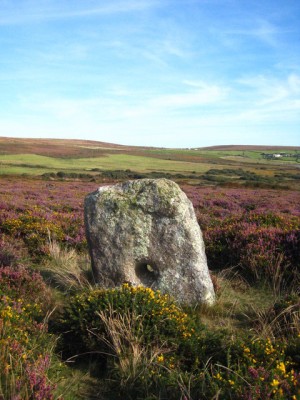Judgment handed down today in Bickford-Smith v Secretary of State for EFRA on commoning in the New Forest. The application for leave to bring a judicial review was made by Imogen Bickford-Smith (the claimant), a New Forest farmer and commoner, who challenged the decision of the Rural Payments Agency (RPA) to refuse subsidies on her commoning activities under the Single Payment Scheme (SPS).
The arrangements for the SPS in the New Forest are unique. European regulations required land farmed in common to be allocated, for the purposes of SPS, on the basis of [actual] use or right of use. Unlike the rest of England and Wales, where there are registers of common land and of the rights exercisable over it, the New Forest has only registers of holdings which have rights attached to them. There are no records of the number of rights held by each holding, although in theory, these are limited by the ancient principles of levancy and couchancy (in practice, those principles have not been applied in modern times). But New Forest commoners must pay marking fees to the Verderers for each animal turned out, under local byelaws.
In 2005, when farmers established entitlements under the SPS, commoners generally were granted entitlements proportionate to their individual share of the total number of rights registered on a common (that proportion was then used to calculate each commoner’s notional share of the common). That wasn’t possible for the New Forest, so instead, New Forest commoners were granted entitlements on the basis of the number of livestock for which they had paid marking fees in 2004, and therefore a measure (at least in theory) of the number of animals turned out in that year. So, whereas commoners generally were appraised on the basis of right of use, New Forest commoners were appraised on the basis of actual use.
But the claimant did not turn out any livestock in 2004, and did not pay any marking fees. So, while the claimant had entitlements in respect of her own holding, she did not have any with regard to the New Forest commons. The claimant could have acquired new entitlements on the market, paid marking fees for the relevant year, and claimed against those. But she instead claimed against the common in 2012, and, lacking entitlements, when that was predictably refused, sought a judicial review of the Secretary of State (responsible for the RPA), on the basis that the RPA should have given her new entitlements in 2012.
The claimant argued that the RPA had allocated entitlements in 2005 on the basis of actual use, and should continue to adjust entitlements and make payments on the same basis. Instead, the claimant said, the RPA had permitted commoners to cease grazing after 2005 but without any mechanism to withhold subsequent SPS payments, so that actual use was no longer a requirement. The claimant argued that the RPA should have recovered entitlements from commoners who were no longer turning out animals, thus enabling the entitlements to be recycled to those who, in effect, took their place.
However, the judge found that the methodology used to allocate common land at the outset of the SPS was necessarily distinct from the continuing administration. Indeed, the SPS was a decoupled subsidy (meaning that payments were not to be related to levels or factors of production), so that, had the RPA approached the scheme in the New Forest as the claimant sought, it might have been both unlawful and contrary to World Trade Organisation rules to which the EU is a party.
The court therefore refused leave (although since the application was heard in a rolled-up hearing, the claim was fully argued in a full day at the Royal Courts of Justice). Nevertheless, the second part of the judgment provides a very thorough if technical walk-through the European instruments which established the SPS in England.
Declaration of interest: most of the posts in this blog will reflect a personal interest, but in this one, I should say that I was directly involved in the course of my work. This post is however intended to be a disinterested report of the case.


